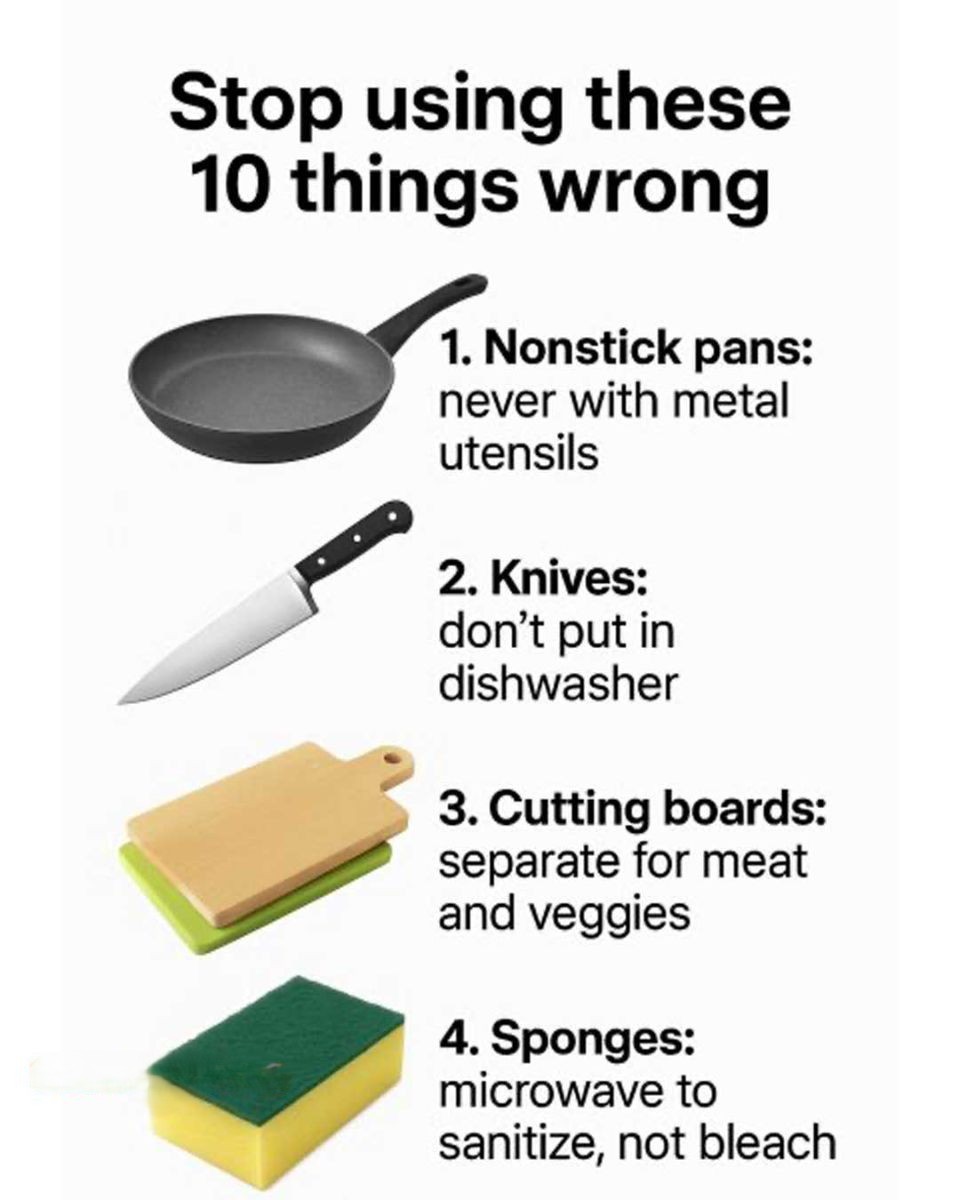Print this recipe
In our daily lives, we often develop habits and practices that we believe are efficient or effective, but they may actually be damaging or counterproductive. Whether it’s in the kitchen, bathroom, or laundry room, the way we use everyday items can have a lasting impact on the environment, our health, and the longevity of our belongings. By re-evaluating these common practices, we can make small changes that lead to significant improvements.
In this article, we explore ten common items and practices that many people use incorrectly. From kitchen tools to personal care habits, each section provides insights and tips on how to use these items properly and why it matters. By making these adjustments, you’ll not only extend the life of your possessions but also contribute to a healthier lifestyle and environment.
1. Stop Using Metal Utensils on Nonstick Pans
Nonstick pans are a favorite in many kitchens due to their ability to cook food without sticking, reducing the need for excessive oils. However, using metal utensils on these pans can cause scratches and damage the nonstick coating. This not only reduces the effectiveness of the pan but can also lead to the release of harmful chemicals if the coating is compromised.
To maintain the integrity of your nonstick pans, use utensils made of silicone, wood, or plastic. These materials are gentle on the surface and help preserve the nonstick quality. A little investment in proper utensils can significantly extend the life of your cookware, saving you money and ensuring safer cooking.
2. Avoid Putting Knives in the Dishwasher
While it might be tempting to toss all your dirty dishes, including knives, into the dishwasher, this can dull the blades and damage the handles over time. The high heat and harsh detergents used in dishwashers can cause knife blades to lose their sharpness and can also lead to rust or corrosion.
Instead, hand wash your knives with warm water and mild detergent, drying them immediately with a soft cloth. This simple practice will keep your knives sharper for longer and maintain their overall quality and safety.
3. Use Separate Cutting Boards for Meat and Vegetables
Cross-contamination is a serious risk in any kitchen, particularly when dealing with raw meat. Using the same cutting board for both meat and vegetables can transfer harmful bacteria like salmonella and E. coli to produce, increasing the risk of foodborne illnesses.
To avoid this, designate separate cutting boards for different types of food. Opt for color-coded boards, such as red for meat and green for vegetables, to easily remember which board to use. Regularly sanitize your cutting boards with a solution of 1 tablespoon of bleach per gallon of water to keep them clean and safe.
4. Microwave Sponges to Sanitize, Not Bleach
Sponges are breeding grounds for bacteria due to their moisture and absorbent nature. While microwaving sponges can kill a significant amount of germs, it’s important not to rely on this method alone for cleaning. Microwave a damp sponge for one minute to sanitize it, but remember that this doesn’t remove dirt or grime.
For a more thorough clean, replace sponges regularly and consider using a mixture of vinegar and water for soaking. Avoid using bleach as it can degrade sponge fibers and leave harmful residues.
5. Don’t Overload Your Washing Machine with Clothes
Overloading your washing machine can lead to ineffective cleaning, as clothes need space to move around for detergent and water to circulate properly. This can leave your clothes less clean and put unnecessary strain on your machine, potentially leading to mechanical issues.
To ensure optimal washing, fill the machine no more than three-quarters full. This allows clothes to tumble freely and ensures they come out as clean as possible. It also helps your washing machine function more efficiently, reducing wear and tear.
6. Resist Using Hot Water for Washing Hands
While it might seem that hot water is more effective at killing germs, studies have shown that water temperature does not significantly impact germ removal. Instead, the duration and thoroughness of handwashing are more important. Hot water can also irritate and dry out skin, especially during winter months.
Use warm or even cool water with soap, and wash your hands for at least 20 seconds. This method is just as effective at removing germs, is gentler on your skin, and conserves energy used for heating water.
Next Page
